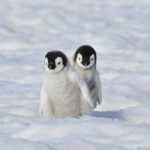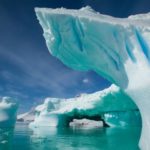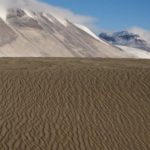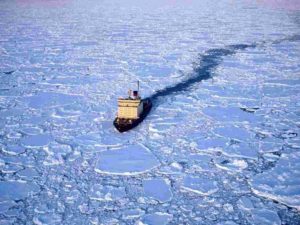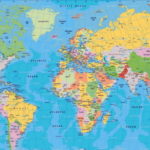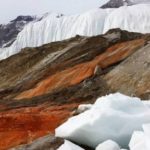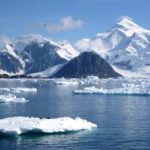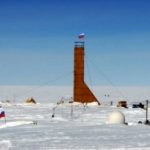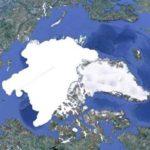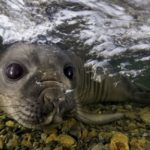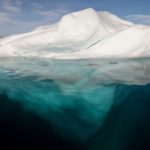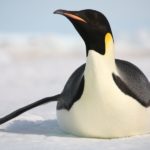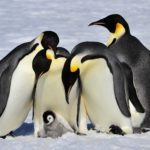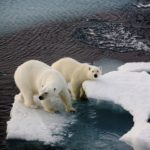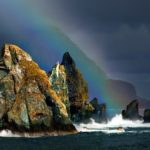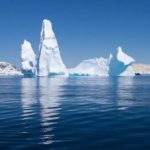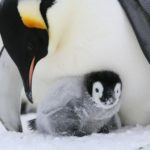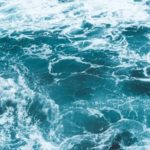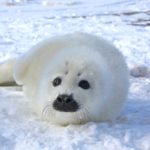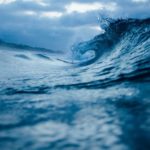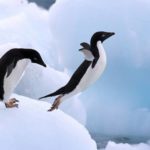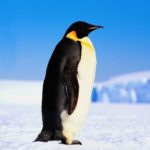Antarctica
 Antarctica is the first thing that comes to our minds if we see the land completely covered with ice. It is located in the southern hemisphere and is the southernmost continent. Officially, Antarctica was discovered in 1820 during a Russian round-the-world expedition led by Faddey Bellingshausen and Mikhail Lazarev.
Antarctica is the first thing that comes to our minds if we see the land completely covered with ice. It is located in the southern hemisphere and is the southernmost continent. Officially, Antarctica was discovered in 1820 during a Russian round-the-world expedition led by Faddey Bellingshausen and Mikhail Lazarev.
Only 2% of the mainland shows land, the rest of the surface is covered with ice, which contains 70% of the reserves of all fresh water on the planet.
In Antarctica live animals that have been able to adapt to cold climatic conditions, mainly penguins and seals.
Algae, bacteria, fungi and some plant species coexist next to them. The height of the ice cover covering Antarctica reaches 2040 meters, which is more than 2.5 times the average surface height of all other continents. Near the South Pole, the thickness of the ice cover reaches almost 4000 meters.
The largest, tallest and largest icebergs in the world were found in Antarctica. In addition, the B-15, which is the largest iceberg in the world and is 295 km long and 37 km wide, is also found in Antarctica.
Conditions similar to Mars
It was announced that Antarctica is similar to Mars by climatic conditions and many other factors. Here, just like on Mars, there is a long darkness, there are no natural resources, and some of the dry valleys of Antarctica resemble the landscapes of Mars. The conditions are so similar that scientists from the National Science Foundation and NASA use Antarctica as a model of Mars, testing technologies and models of technology that will soon be sent to Mars.
Antarctica is considered the driest, coldest and windiest place on Earth. The lowest recorded temperature is -89.4 C, and the average temperature is -34.4 C. Antarctica is considered the largest desert, since it is practically devoid of precipitation. In addition, there are only two seasons – winter and summer. During the 6 summer months the sun shines in Antarctica, it spends 6 winter months in the dark. It is in winter that the size of the mainland increases, and in summer it decreases.
Antarctica has many other animals that can only be found here. So, the petrel lives only on this continent. The most famous inhabitants of Antarctica – penguins, blue whales, fur seals and seals – here is the largest population of these animals. The Emperor Penguin is the only species that breeds in winter. The blue whales that live in the waters of Antarctica are larger than the blue whales that live in other seas.
Tourism exists in Antarctica, but it is only possible on the very outskirts of the mainland. In addition, fishermen also catch fish just off the coast. Several research stations are based in Antarctica, but they are exclusively engaged in scientific activities. There is an “Antarctic dollar”, but it does not have legal force and, therefore, cannot be used as a monetary unit.
Antarctica is considered a zone free of any kind of property. Many countries tried to establish their rights to this mainland, but did not receive any recognition. Antarctica is a politically neutral land and can only be used for scientific purposes.
Antarctica is a mainland without a population, since low temperatures and severe climatic conditions are not suitable for permanent residence. On the mainland you can meet only tourists and researchers. In 1978, the Government of Argentina sent seven families to the mainland to test the possibility of survival on this land. Emilio Marcos Palma is the first boy born on the outskirts of the Antarctic Peninsula, and Solveig Jacobsen is the first girl to see the light on the mainland. On the island of King George, near Bellingshausen station, the Russian Orthodox Church was built.
Antarctica is the best place to study and research meteorites. The first meteorite was discovered in 1912. Today, Antarctica is recognized as a natural gallery of various types of meteorites.
